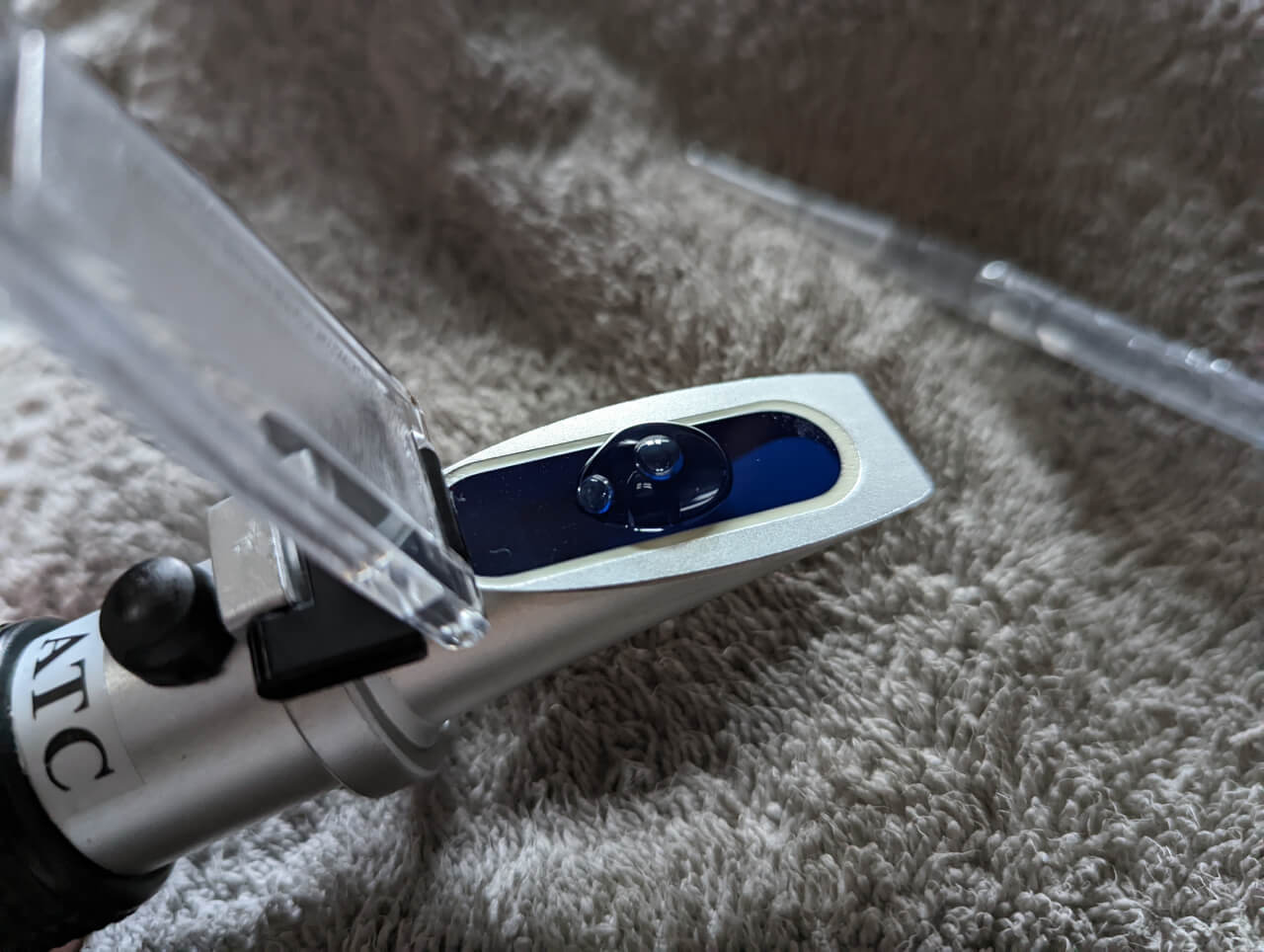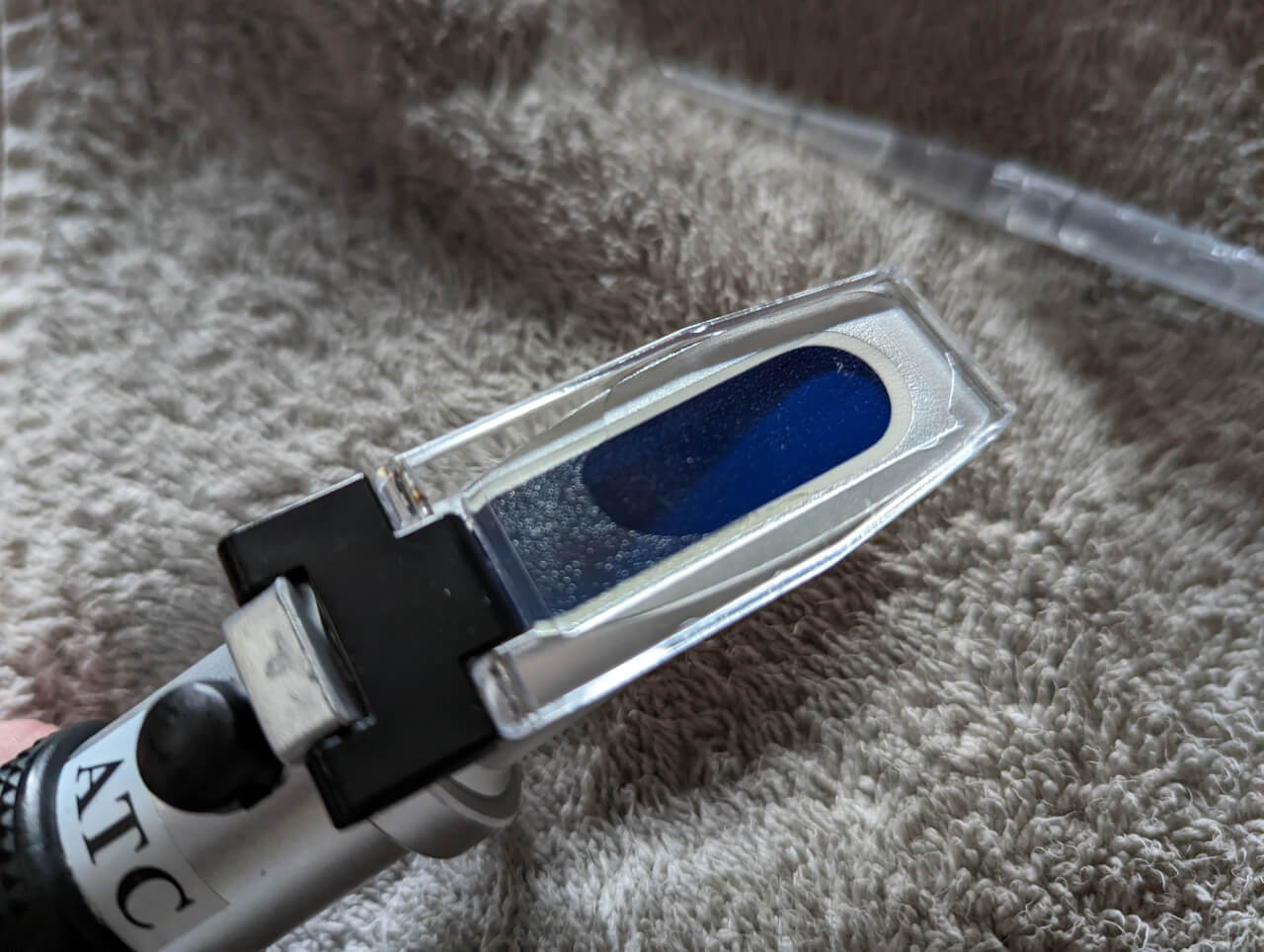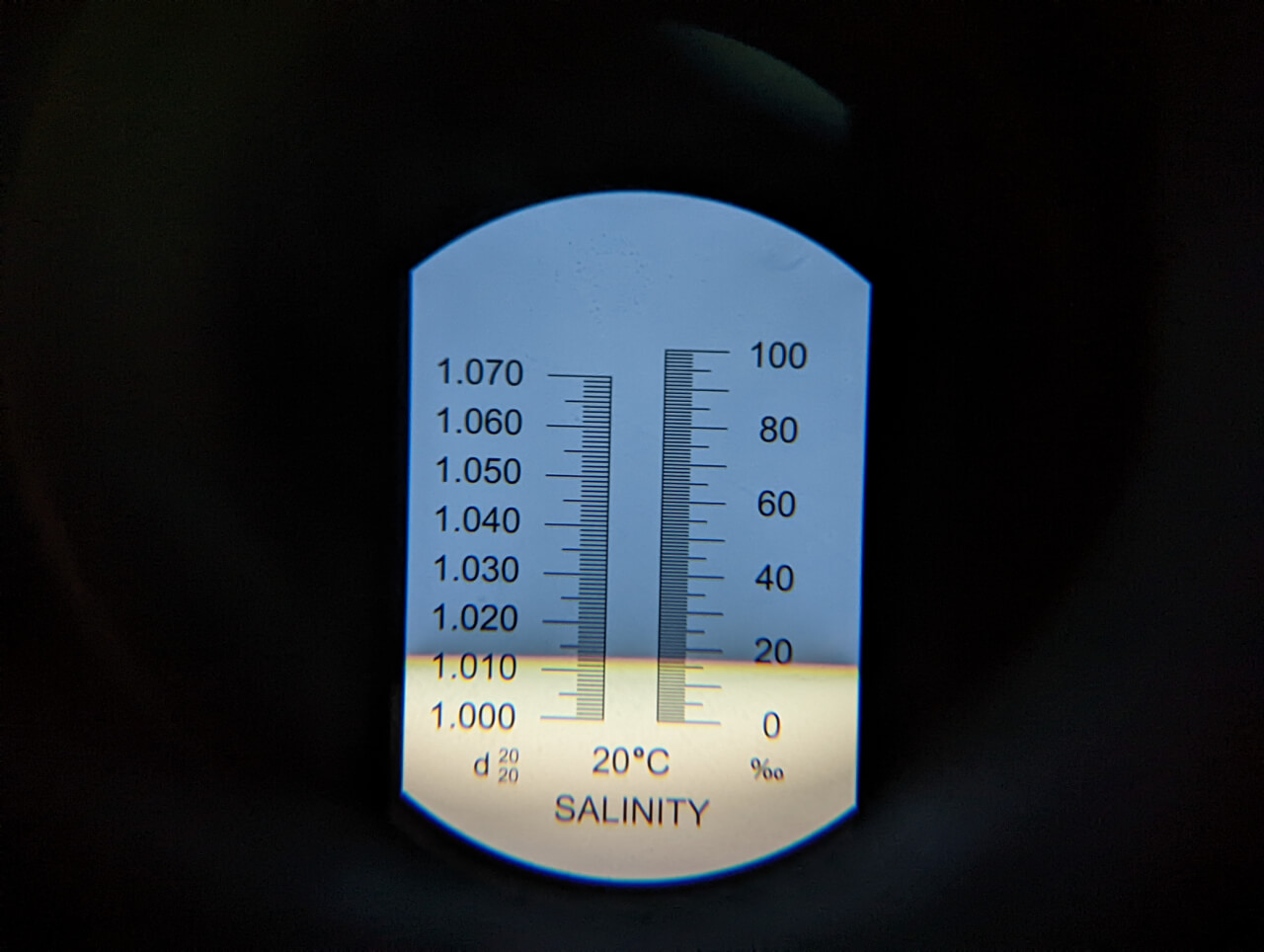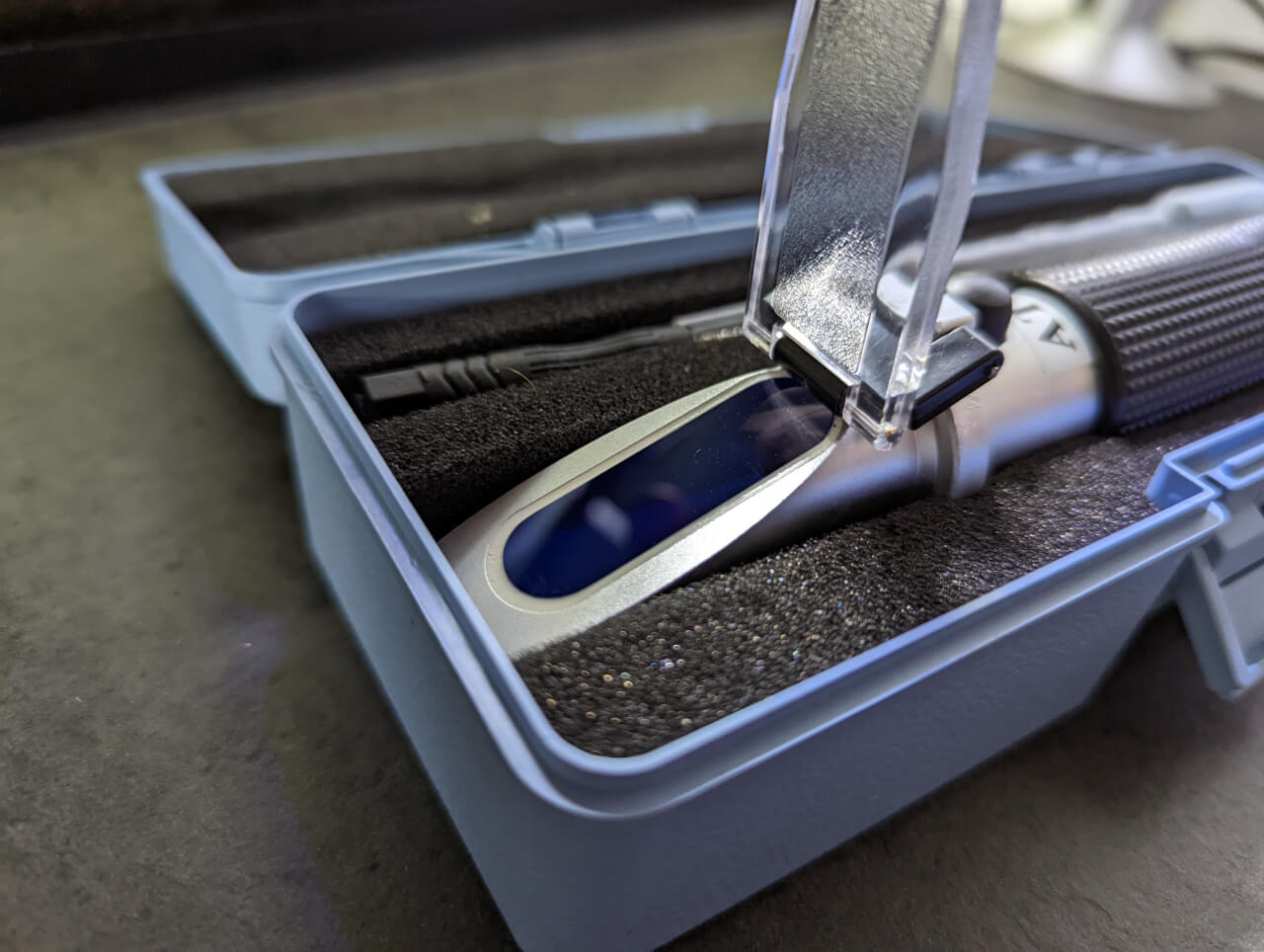What is a refractometer?
A refractometer can be used to measure the concentration of dissolved transparent substances, such as salt, in water.
When light hits the water, it refracts or “bends” different amounts depending on what exactly is dissolved in the water, and how much of it there is. For saltwater and brackish aquariums, the light will refract more the higher the salinity is.
We measure the amount of refraction as a unit called specific gravity. This is a measurement of the relative density of the liquid compared to pure water.
For example, pure water will have a specific gravity (SG) of 1.000 because it is just water. Brackish water for Opae Ula tanks will be around 1.010 SG, and saltwater for reef tanks will usually have a specific gravity of 1.024. The specific gravity increases with the amount of dissolved salt.
An alternative measurement to specific gravity is with parts per thousand (ppt).
Basic steps
- Collect a salt water sample
- Place sample on refractometer prism
- Close the sample cover
- Look through the sight
Collect a sample
Place the pipette a few centimetres into the water and collect a small amount.
Don’t collect a sample from the water surface as any surface scum, algae, or bubbles can cause you to get an inaccurate reading.
Place the sample
Before putting a few drops of your water onto the prism, ensure it’s clean to prevent false readings. If it’s dirty, you should wipe it with a paper towel and RO water.
Place a few drops of your water onto the middle of the prism. Add enough to cover the surface when the lid is closed.

Close the cover
Carefully close the lid over the prism to keep your sample water in place.
Once covered, avoid reopening it again, as you’ll put air bubbles into the water and make the results inaccurate.

Look through the sight
Point the sample end towards a bright light like a sunny window and read the specific gravity value from the scale.
In the image below you can see that the result is showing 1.013 SG, which a perfectly safe level for an Opae Ula tank.

Why it’s important to measure salinity
It’s important to measure your water’s salinity frequently, as relatively minor swings in the value can have a big impact on your livestock. Too much or too little salt can quickly cause plenty of health issues, most of which can be fatal.
Throughout the day, water will be evaporating from your aquarium and leaving behind the salt it used to have dissolved in it. This causes the salinity to slowly climb over time.
You should try to keep your water level as stable as you can to prevent these salinity swings. Topping up with reverse osmosis (RO) water will bring you back to the original parameters again.
When mixing saltwater, you should make sure it’s dissolved completely before testing to ensure you’re getting an accurate reading. If you miss an undissolved lump of salt at the bottom of the bucket and add it to your tank, you could end up with a much higher salinity later.
Cleaning
Maintaining a refractometer is very simple, you should only really need to clean the prism.
It’s suggested to clean the prism after every use so that it’s ready to go next time. You will want to test your water on a clean prism in order to get accurate readings. This habit also prevents anything drying and becoming difficult to clean off later.
Calibrating
You should calibrate your refractometer every few months to have confidence your water’s salinity levels are correct.
On models like the one shown above, this is done by testing with RO water on the prism and twisting a small screw on the side until it reads 1.000 SG.

